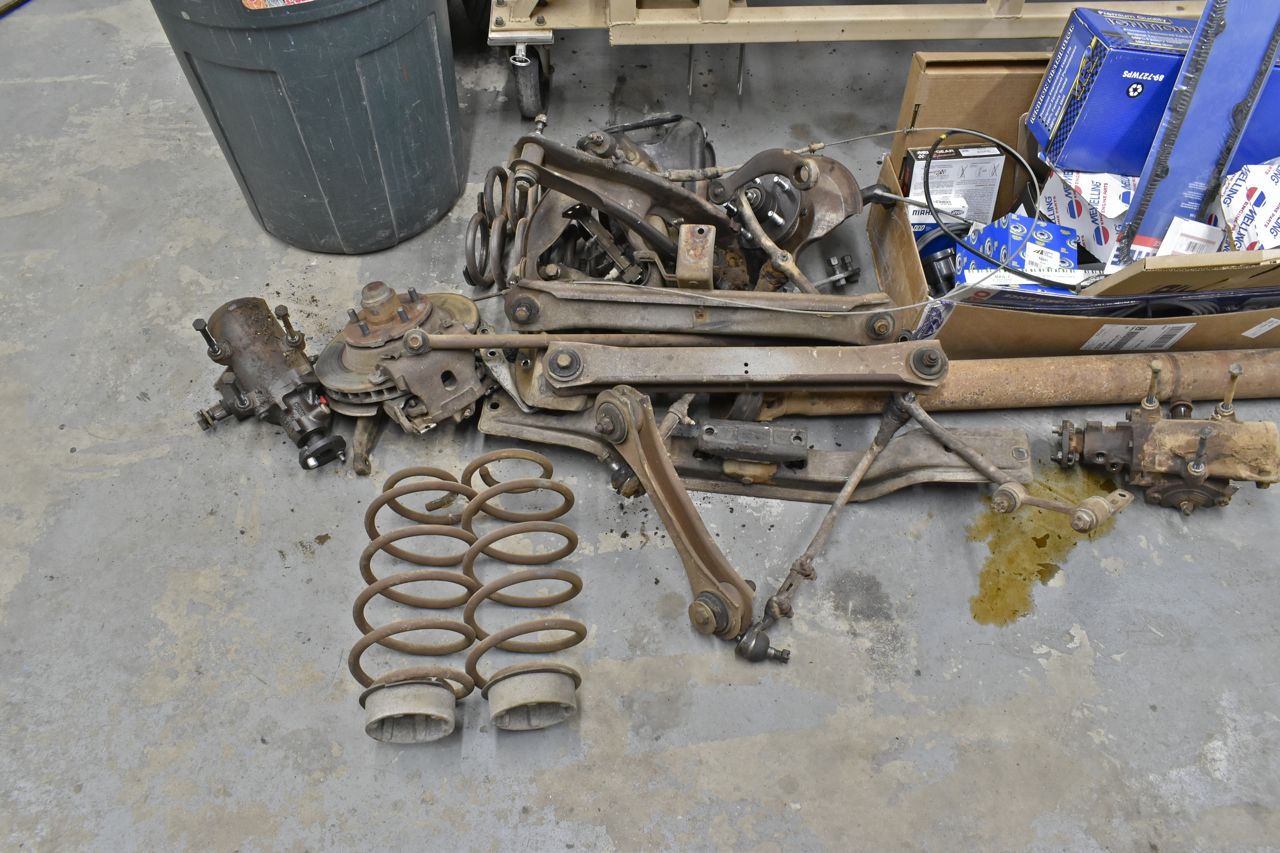1968 Ford XL Repairing Whilst Keeping It Roadworthy : 40 Frame 1966 vs 1968
2023, November 14
1 - 2 - 3 - 4 - 5 - 6 - 7 - 8 - 9 - 10 - 11 - 12 - 13 - 14 - 15 - 16 - 17 - 18 - 19 - 20 - 21 - 22 - 23 - 24 - 25 - 26 - 27 - 28 - 29 - 30 - 31 - 32 - 33 - 34 - 35 - 36 - 37 - 38 - 39 - 40 - 41 - 42 - 43 - 44 - 45 - 46 - 47 - 48 - 49 - 50 - 51 - 52 - 53 - 54 - 55 - 56 - 57 - 58 - 59 - 60 - 61 - 62 - 63 - 64 - 65 - 66 - 67 - 68 - 69 - 70 - 71 - 72 - 73 - 741966 Frame vs 1968 Frame
It isn't everyday that a photo comparison of two 3rd gen frames is possible. But since I was going to dispose of the 1968 frame with rust holes I had a chance to roll out the completed '66 chassis for a visual comparison to those whom might be interested.
Just to recap on the 3 classes of 3rd gen frames there are:
1.) Station wagon frames
2.) Convertible frames
3.) All others (same for 2 or 4 door, post or no post)
All our 3rd gens fall into #3 category.
Here's the 1968 frame.

The 1966 chassis.

The frames are interchangeable with minor work. The critical mounting areas are the same for each, there's just a few differences. There is one caveat, the 1965 frame uses different locations for the pan-hard/track-bar location on the axle.
The upper cross member on the '68 is different. Ford changed this to use larger bushings in the rear upper control arm and judging from the construction it is much easier and cheaper to make than the '65-66.
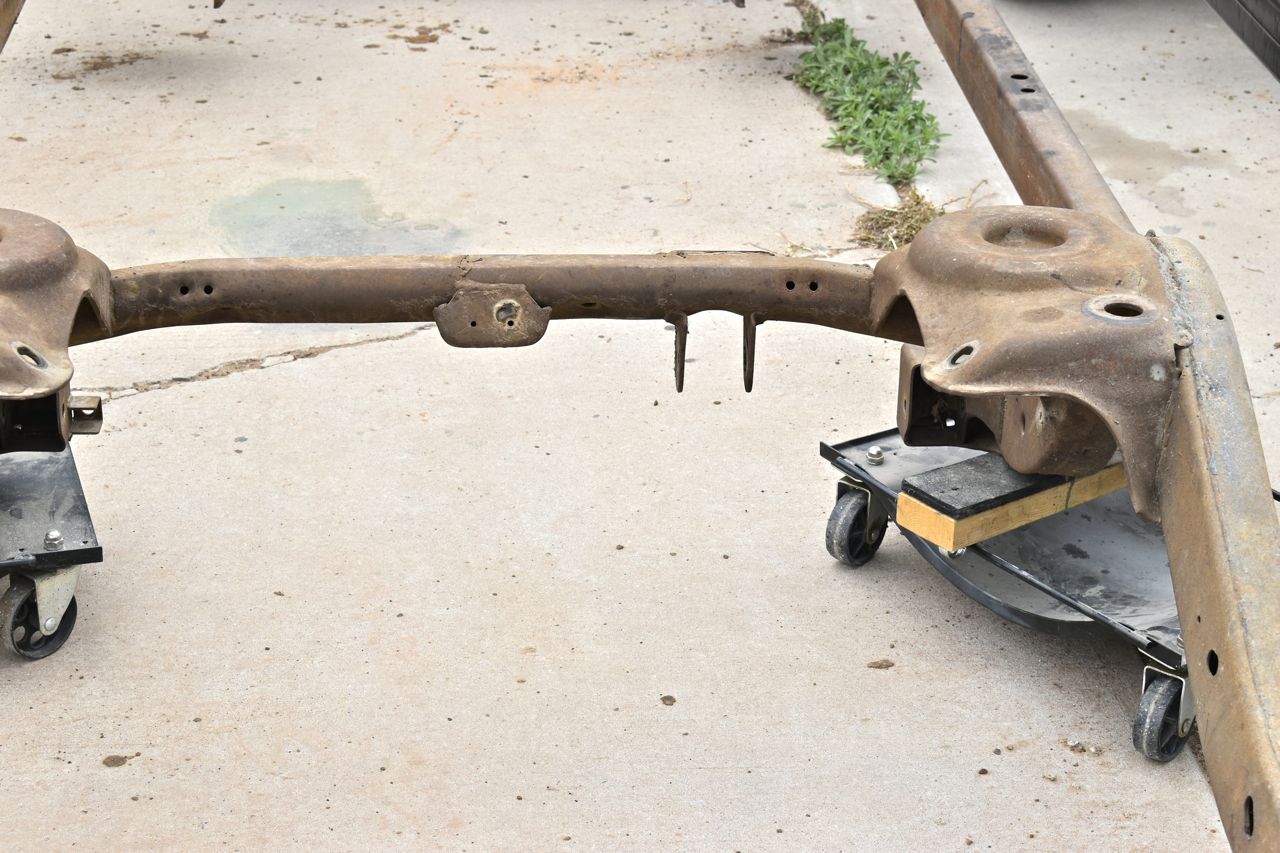
There's a pocket on the '65/'66 chassis for the upper rear control arm. You can use a '65/'66 rear upper control arm on a '67/'68 frame but not the reverse.

That's the difference for the rear section. Now for the middle section.
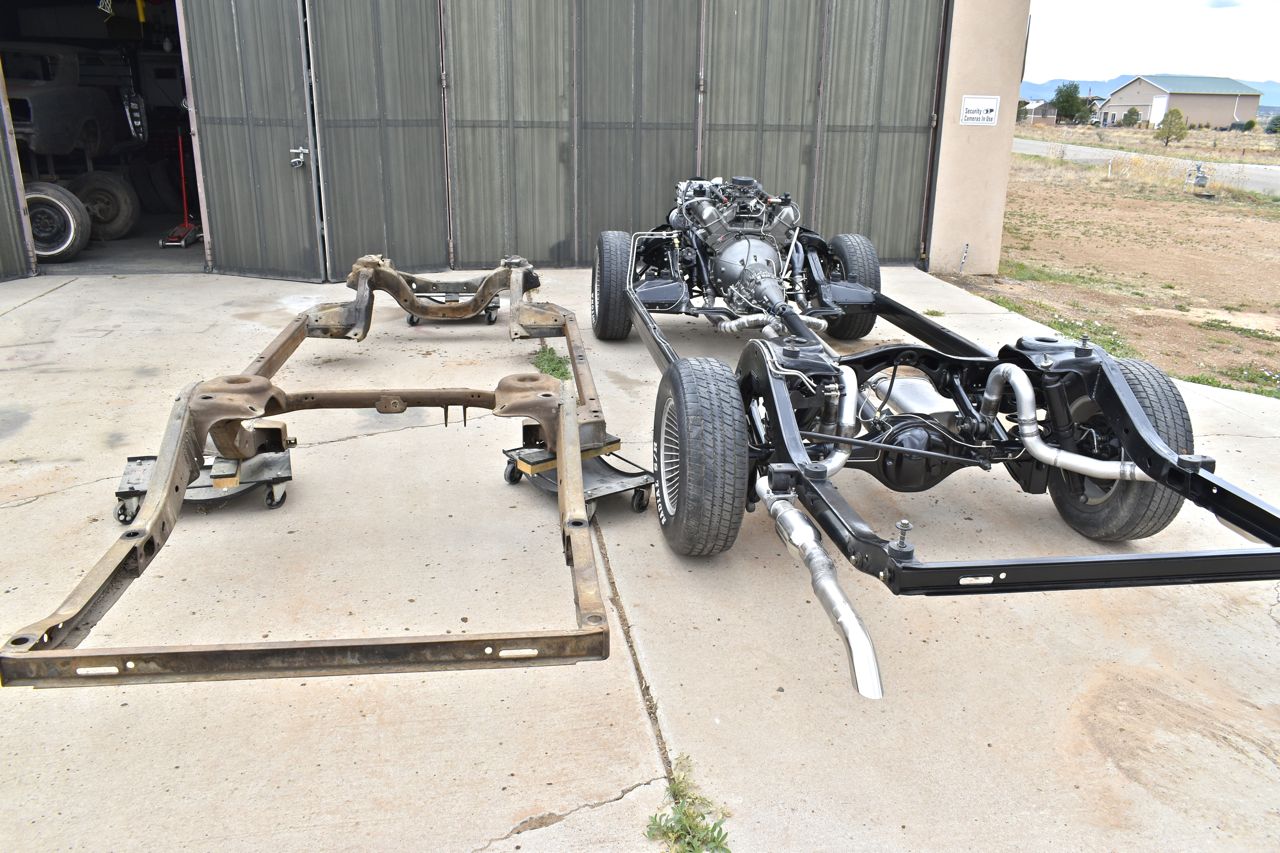
On the '65/'66 frames the parking brake cables run in the centre like a 'V' the front cable comes from the front of the body and runs right to the transmission cross member.

The cables pass through holes in the rear torque box/control arm attachments and then to each wheel. The rear left and right cables are the same.
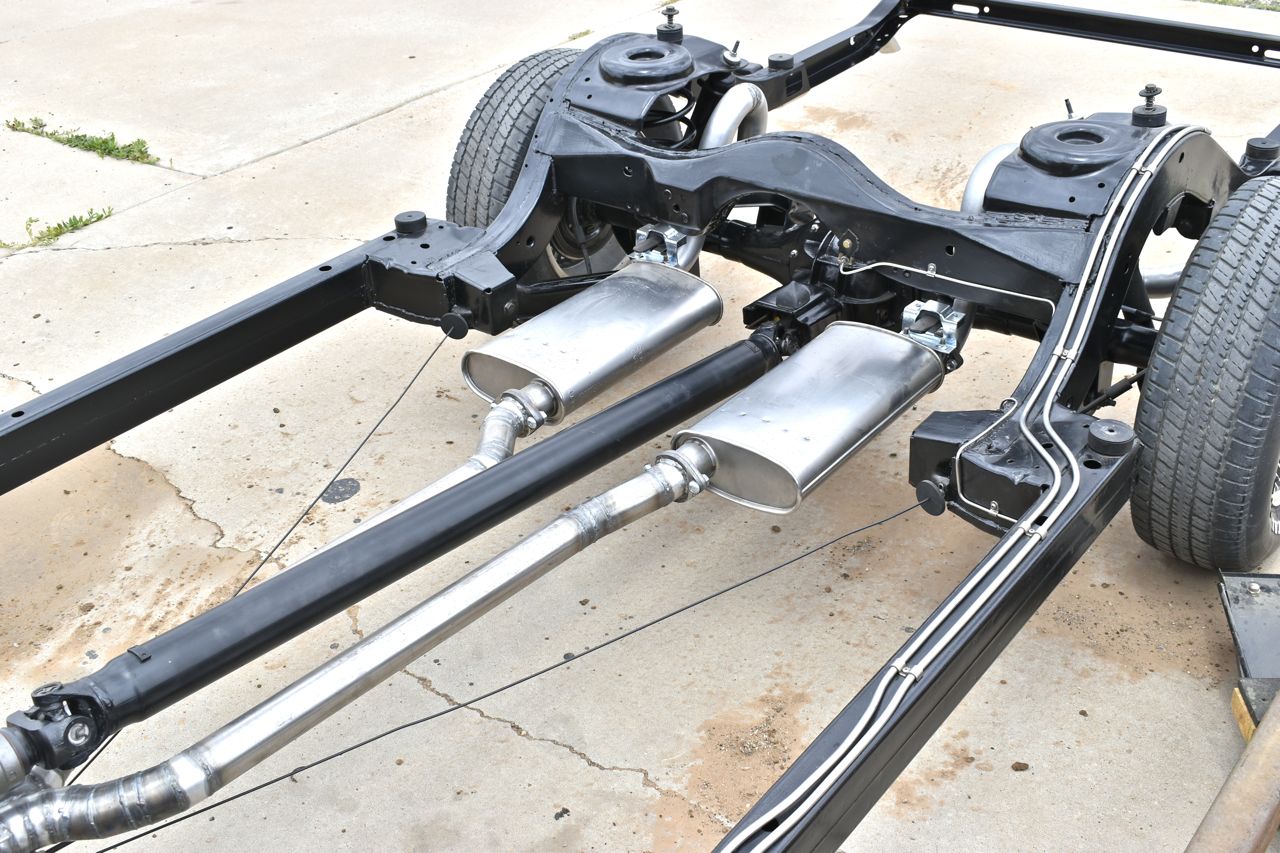
I don't have the cables in the '67/'68 frame, you'll have to use your imagination, but both rear cables run over to the drivers side rear torque box/control arm mount where then the front cable runs along from the drivers side front torque box to the rear with an equalizer/adjusting bar. The rear left and right cables are different as one is much longer for the passenger side wheel.

This is the drivers side front torque box and the front parking brake cable runs right through it. It enters the front side and exits here in the back.

The front parking brake cable comes out of the body and runs immediately into the front torque box. This is a MAJOR pain to change with the front wheel apron on the car.

There is no provision in the '65/'66 front torque box for the front parking brake cable since it runs over and to the transmission cross brace.
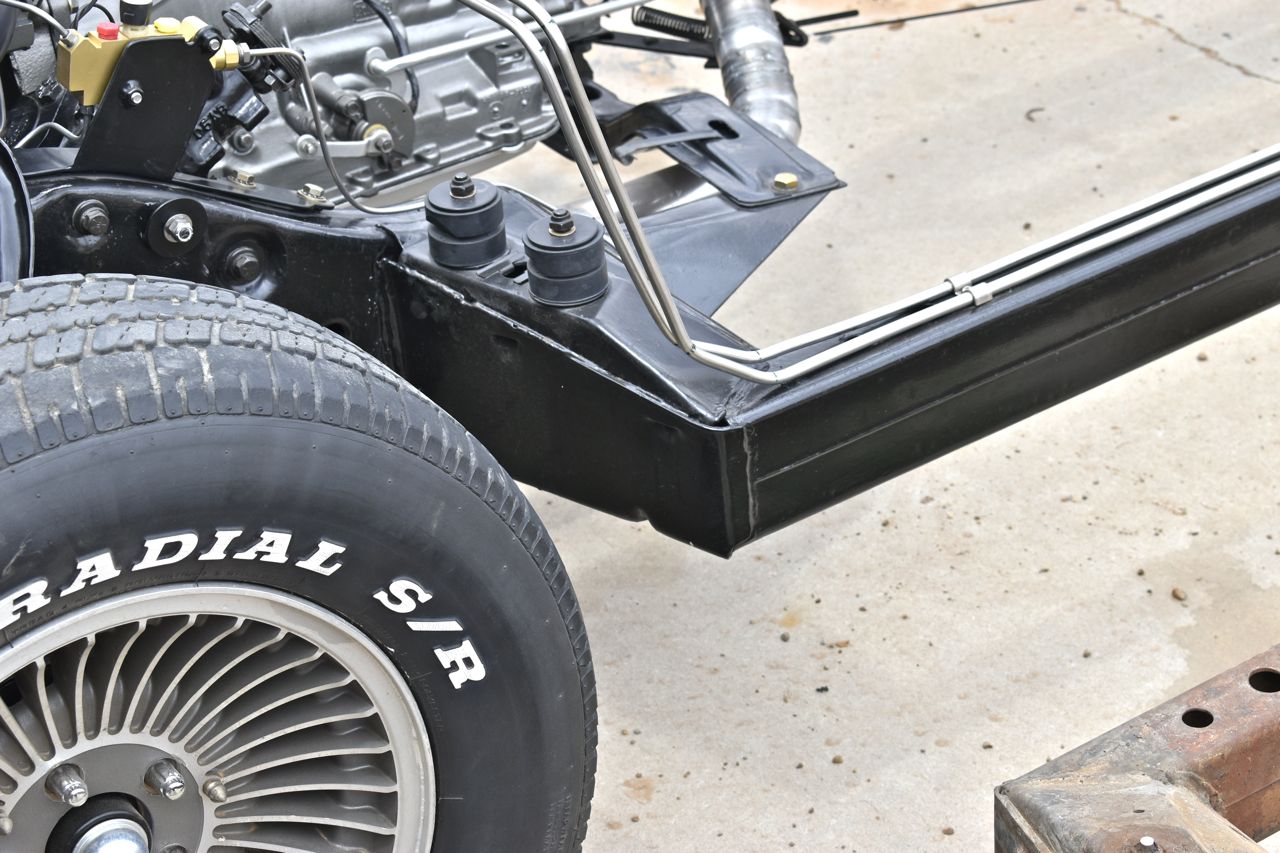
No exit hole either.

And that's it, everything forward of the front torque boxes is exactly the same. That's why 1968 front disc brakes will bolt on directly to any 1965-1968 car with drums. Obviously you have to use the spindle from the disc brake car, but there are zero alignment problems (bump steer, caster or camber) as you might have with using spindles and disc brakes from another model.
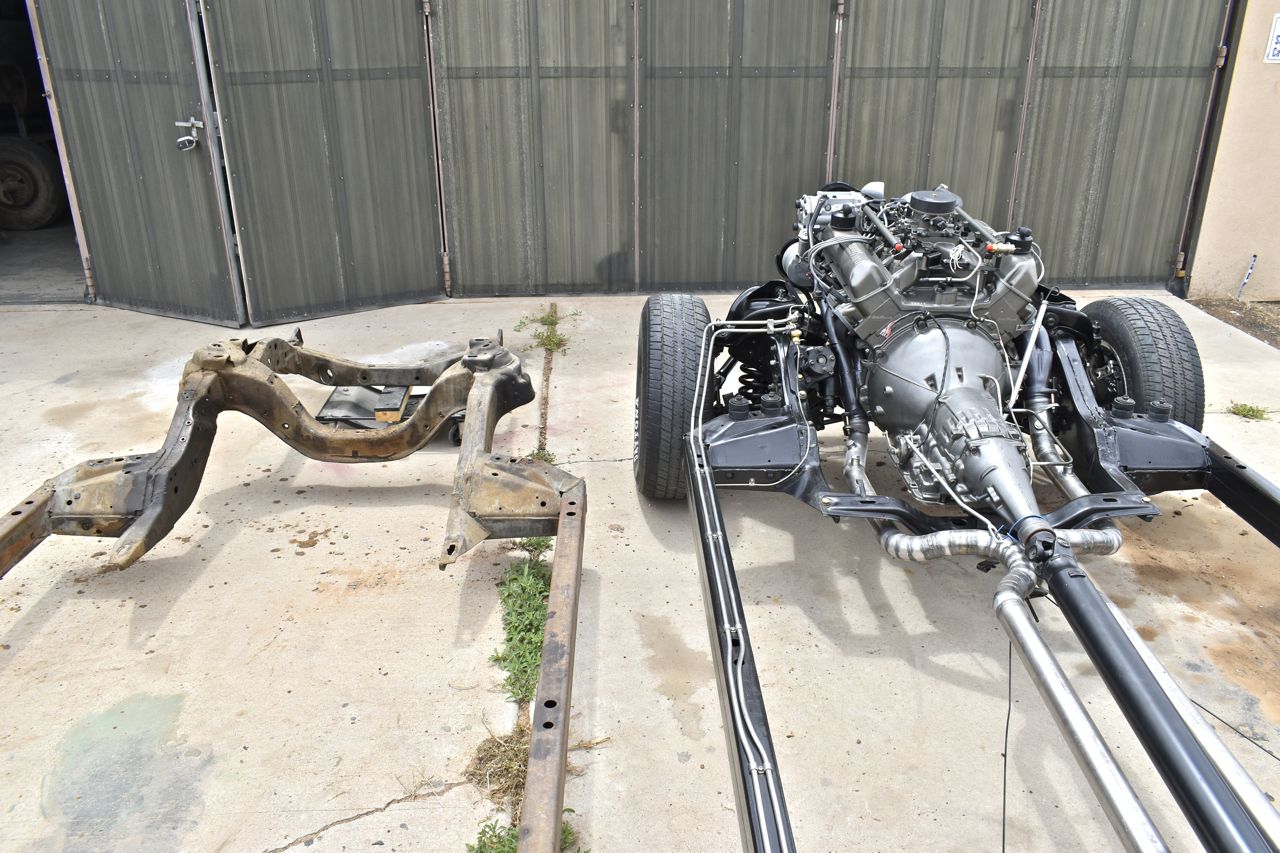
This 1966 chassis has 1968 front discs on it.

So just how bad was the rust on this frame?.... Actually not bad at all.
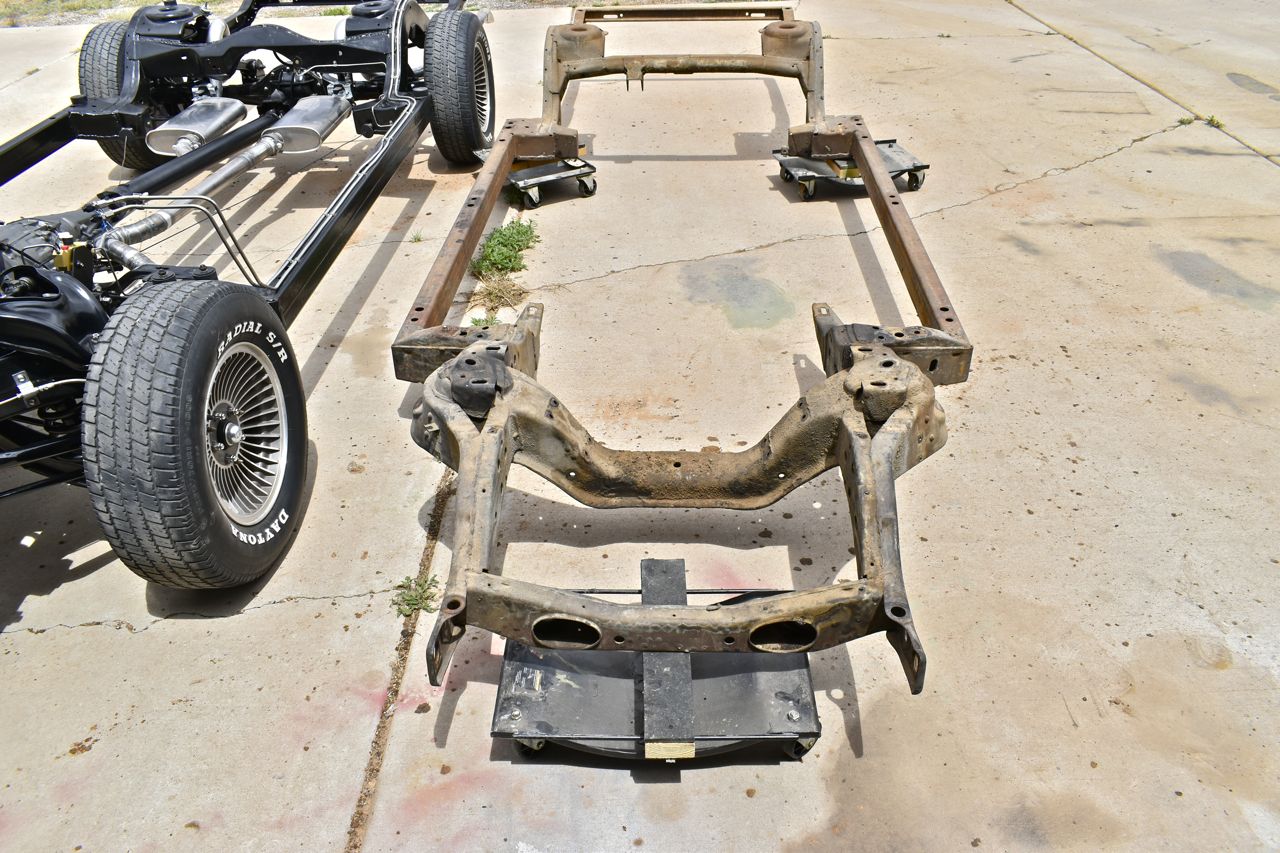
It was only limited to about 12" of lower frame, the rest of the frame was in really good condition. I hated to get rid of it, but I already have 3 spare frames and no room.
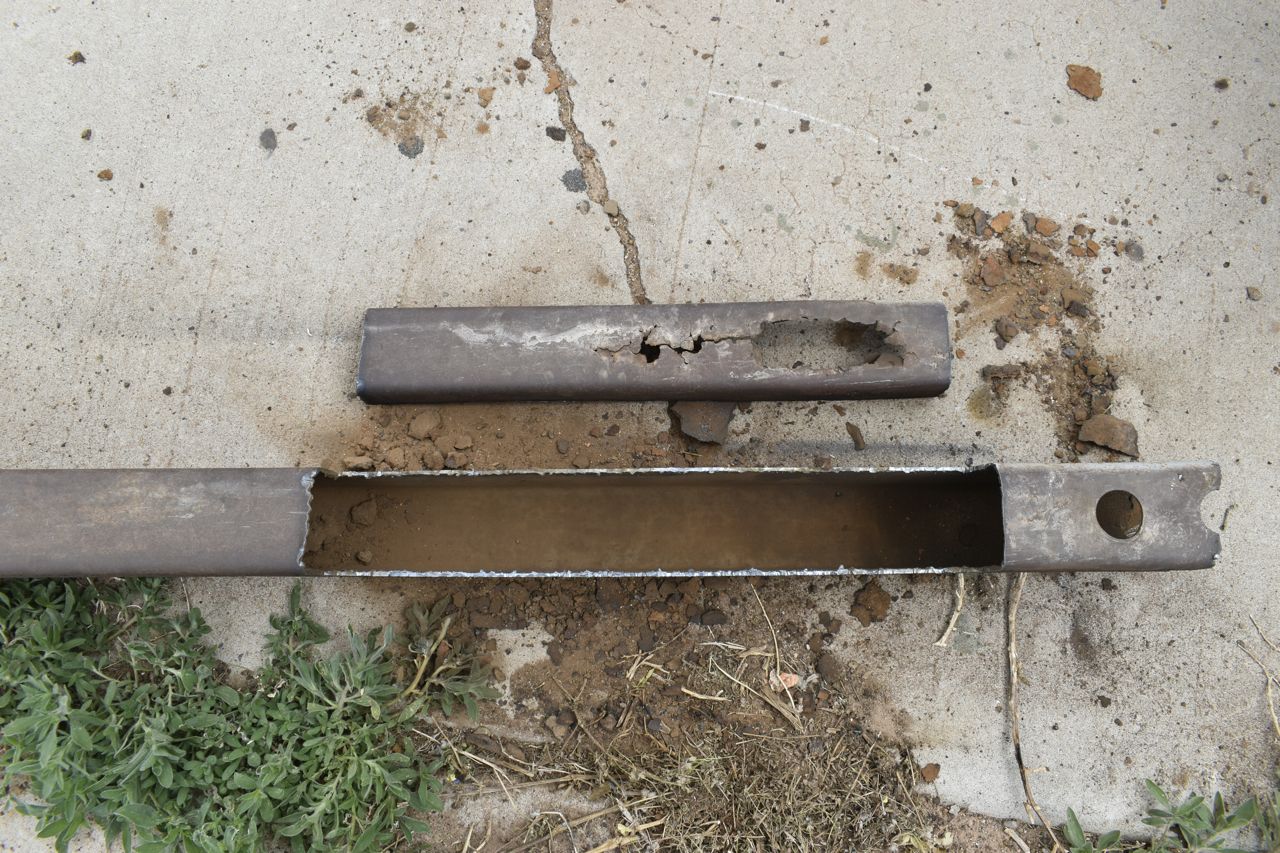
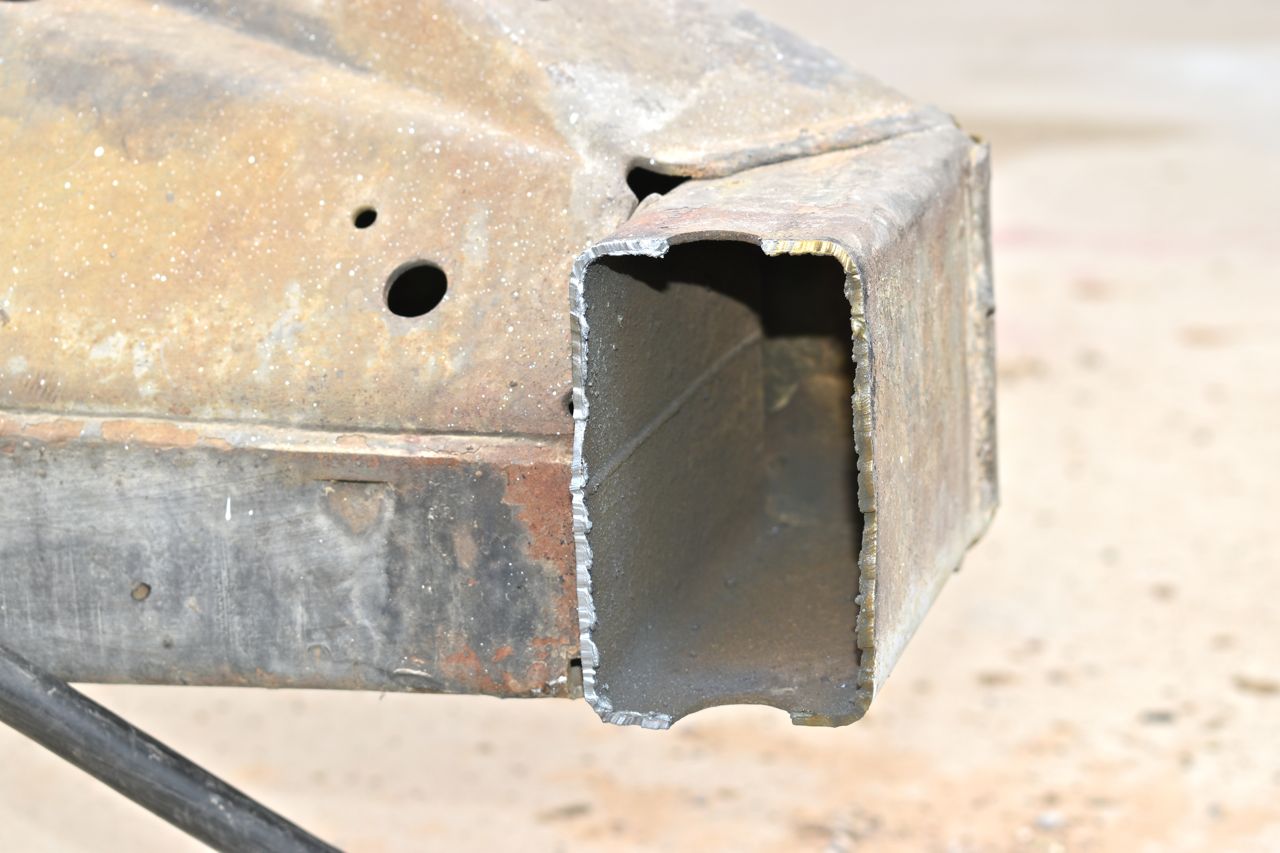
This yielded many good parts including another spare set of front disc brakes. Most importantly I have the correct front coil springs for the '68 golden XL now, with these I can get the normal ride height back and do a proper alignment.
